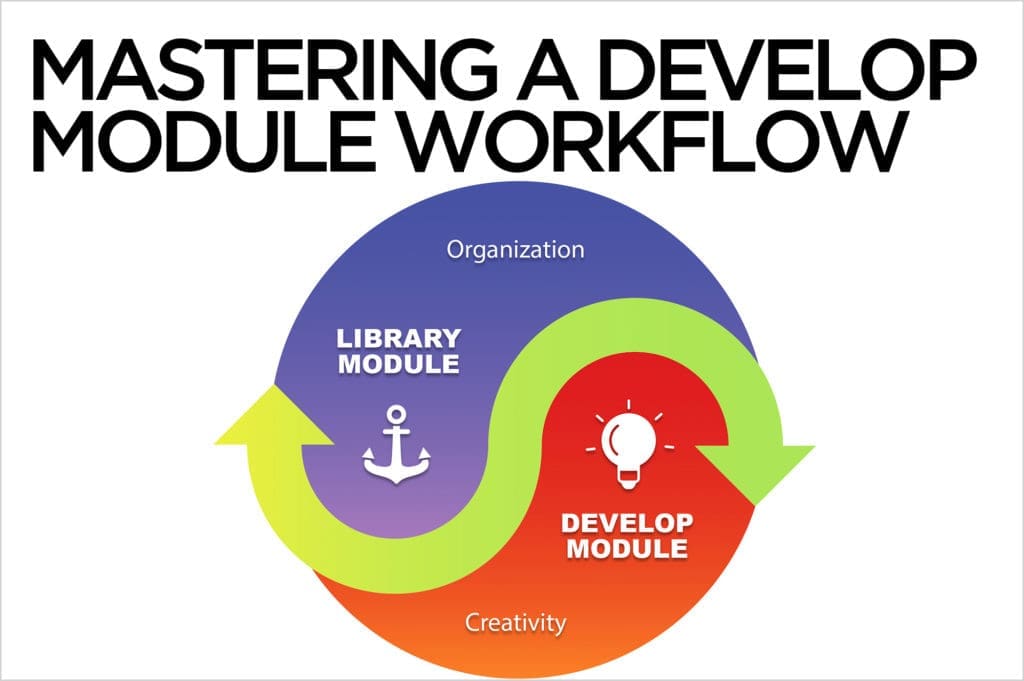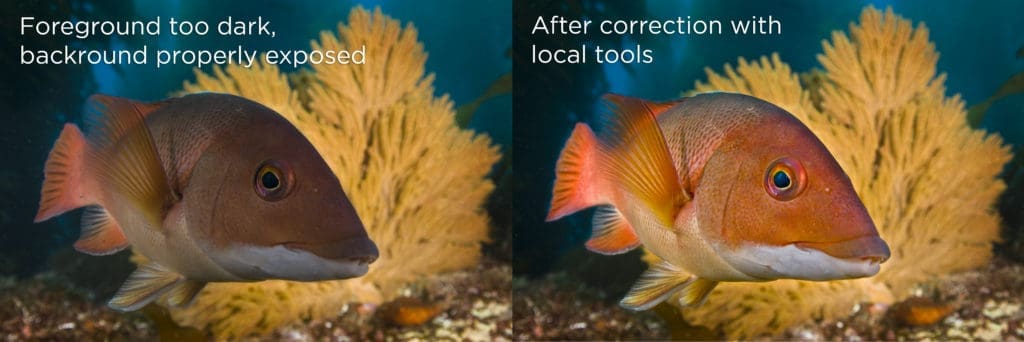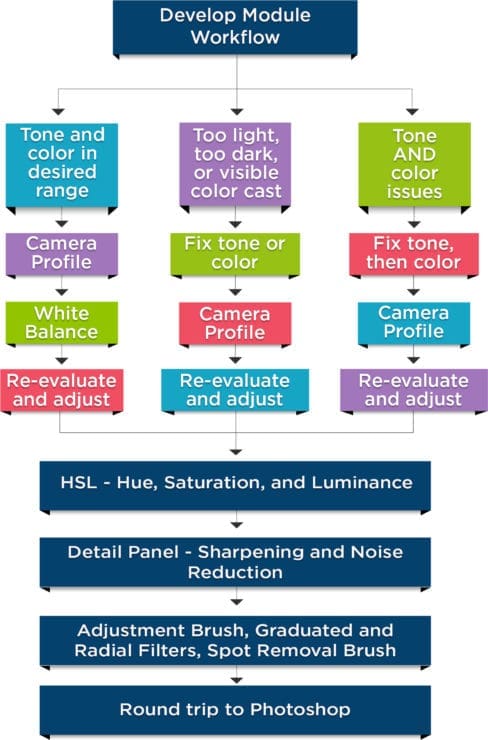
12 Nov Mastering a Develop Module Workflow
There’s a yin-yang involved with post-production in Lightroom. In the Library Module, building an asset management strategy often seems more like a chore than a creative endeavor, while editing in the Develop Module requires creativity and artistic vision. Despite their differences, both sides of the Lightroom coin are essential to provide the best environment for the ultimate goal of optimizing each image.
Workflow Mastery
In the Library Module, mastery evolves from understanding the concept of Lightroom’s database, and more importantly from being able to troubleshoot any organizational kerfuffle. In the Develop Module, mastery comes from knowing which tools are best suited to a particular task, and having as many as possible in your bag of tricks. At first, the process can be frustrating. Developing an analytical eye takes time, and understanding the functionality of the Develop Module tools is easy compared to the more advanced skill of diagnosing an image. I’m often asked how I know where to start when I begin editing, and though sheer experience plays an enormous role, there are a few basic questions that help to determine the initial direction of any Develop Module workflow.
First Questions to Ask
- Is the photo too light or too dark? This may seem rudimentary, but it’s surprising how many people try to correct color before being able to see it. The photo’s tonal range must be in the ballpark before you can accurately approach color. Always adjust tonal problems before any other editing.

- Does the photo have a noticeable color cast? If you can see it, it’s strong enough to interfere with Camera Calibration (more on that later) and contrast corrections.

- Are there specific parts of the picture that you want to change while others can remain as they are? If so, make global adjustments of white balance and tone to the subject first, knowing you’ll rely on the local tools to adjust the rest.

- Will the image be going to Photoshop? This may influence when and if the picture gets cropped in Lightroom, and whether or not you attempt backscatter removal in Lightroom at all. If I know an image is destined for Photoshop, especially if there’s compositing involved, I leave the photo uncropped, because I want to have all pixels available for use. If there’s a significant amount of backscatter, bubble or object removal to do, then I don’t waste my time with Lightroom’s clumsy Spot Removal tool.
Camera Calibration
Camera Calibration is often overlooked in the editing process because of its position its use is somewhat mysterious. Nonetheless, it’s an important first step for every RAW file, as it determines the contrast and color interpretation of the photo, which can greatly influence other decisions you make as you work on the file.
By default, the camera profile applied to RAW images as they’re imported is called Adobe Color, a profile made by Adobe specifically for your camera based on extensive testing. The idea is that the same scene photographed by different cameras will look the same once the Adobe Standard setting is applied (assuming that other color settings like White Balance are also identical).
All of your camera’s color profiles appear in the Profile menu in the Basic panel. These profiles are created by Adobe to emulate the effect of selecting that color profile and using the JPEG format on your camera.
The Camera Calibration panel icons give you the opportunity to easily apply a profile of your choice in post. If your image is a jpeg, psd or tiff, you can only use non-RAW profiles. For more information on Camera Profiles, check out my other article “JumpStart with Profiles”.

Basic workflow
- Camera Calibration
- Crop, unless Photoshop will be used.
- White Balance
- Tonal Adjustments (skip Clarity, Vibrance and Saturation until the end)
- HSL
- Detail for import sharpening
- Jump to the Adjustment Brush, Graduated Filter and Radial Filter to make local edits.
- Add Global Clarity, Vibrance, and Dehaze as a finishing touch – only if needed!
- Round trip to Photoshop if needed.
Deciding on an initial direction isn’t always easy, so here’s a flow chart to help you get started, and remember – fix the biggest problem first.

Flowcharts. Set of 6 flow charts schemes, diagrams. Simply color editable. Infographics elements.
Pro Tip:
Stay loose! Post –processing is a fluid process, which often requires jiggling settings that have already been adjusted on a first pass. Don’t be rigid about workflow, and analyze each image separately for its specific needs.
